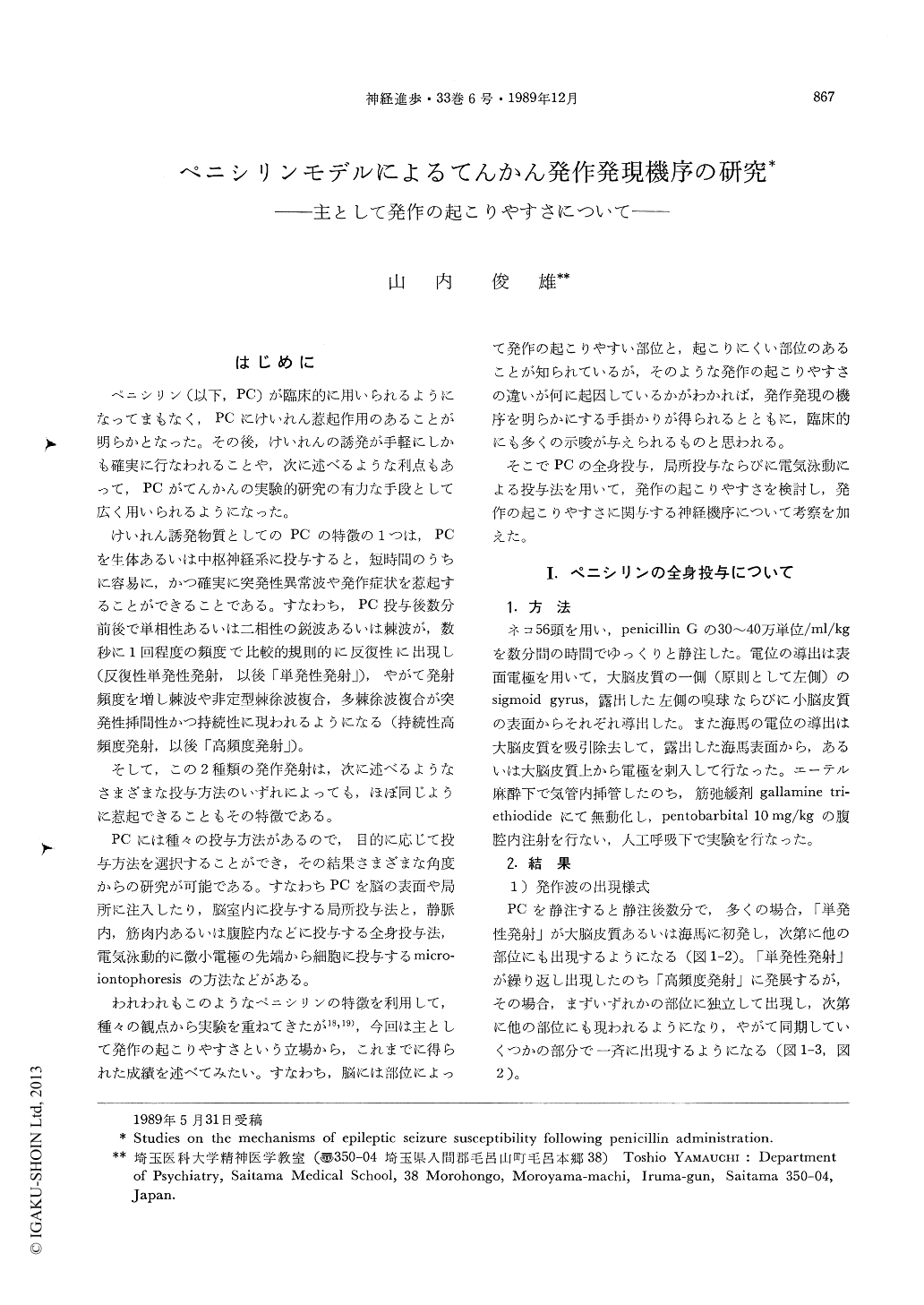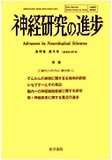Japanese
English
- 有料閲覧
- Abstract 文献概要
- 1ページ目 Look Inside
はじめに
ペニシリン(以下,PC)が臨床的に用いられるようになってまもなく,PCにけいれん惹起作用のあることが明らかとなった。その後,けいれんの誘発が手軽にしかも確実に行なわれることや,次に述べるような利点もあって,PCがてんかんの実験的研究の有力な手段として広く用いられるようになった。
けいれん誘発物質としてのPCの特徴の1つは,PCを生体あるいは中枢神経系に投与すると,短時間のうちに容易に,かつ確実に突発性異常波や発作症状を惹起することができることである。すなわち,PC投与後数分前後で単相性あるいは二相性の鋭波あるいは棘波が,数秒に1回程度の頻度で比較的規則的に反復性に出現し(反復性単発性発射,以後「単発性発射」),やがて発射頻度を増し棘波や非定型棘徐波複合,多棘徐波複合が突発性挿間性かつ持続性に現われるようになる(持続性高頻度発射,以後「高頻度発射」)。
This investigation was carried out to clarify the mechanisms for production of different seizure susceptibility. To study this problem three different penicillin applications were made; systemic (intra-venous), topical and iontophoretic application. Potentials were recorded from the surface of cerebral cortex, hippocampus, cerebellum and olfactory bulb. The following results were obtained: 1) A few minutes after penicillin systemic or topical application, "repetitive isolated discharge" (RIDs) were observed by gross electrode and thereafter, it developed to "sustained high-frequency discharge (SHD)".

Copyright © 1989, Igaku-Shoin Ltd. All rights reserved.


